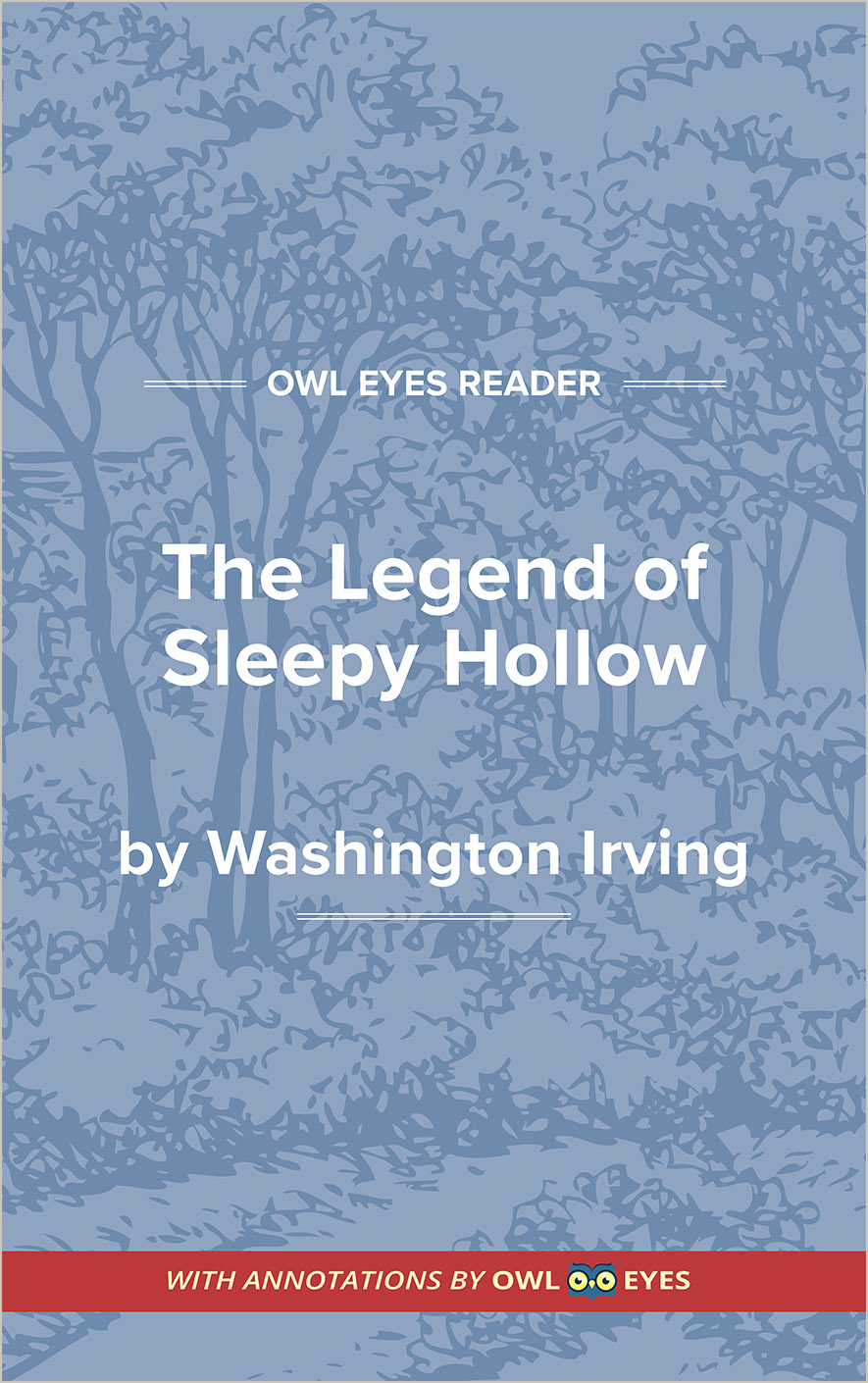Analysis Pages
Historical Context in The Legend of Sleepy Hollow
Washington Irving published “The Legend of Sleepy Hollow” in his 1819 story collection The Sketch Book of Geoffrey Crayon, Gent. At the time, in the decades following the Revolutionary War, the United States was in the process of constructing a national identity. Many Americans felt that the young nation lacked a cultural identity, as well as a national mythology and folklore. When Irving’s Sketch Book came out, many Americans heralded the stories as the birth of American fiction. The folk tales of the New York Dutch settlers were uniquely American in origin, providing Americans with a folklore to call their own. Another important aspect of the story’s historical background is the tension between the different ethnic groups in early America. The eastern seaboard of the United States was first settled by settlers from two European nations: England and the Netherlands. In particular the state of New York, where “The Legend of Sleepy Hollow” takes place, was a mix of English and Dutch settlers. Ichabod Crane represents an American of English stock entering into the world of Dutch-stock settlers.
Setting: “The Legend of Sleepy Hollow” takes place in the Hudson River Valley of New York, specifically in the vicinity of Tarrytown, at the turn of the 19th century. The village of Sleepy Hollow itself is described as lying north of Tarrytown. In reality, the exact nature and location of Sleepy Hollow is disputed. The town of North Tarrytown decided to go by the name of Sleepy Hollow in 1996, but many have claimed that other locations, such as Kinderhook, New York, represent the true Sleepy Hollow. It may be the case that Washington Irving invented Sleepy Hollow, despite his claims to have visited the village as a teenager, soaking in its local ghost stories. In any event, the rural setting offers one of the crucial themes of the story, that of country versus city. The local Dutch farmers find Ichabod Crane’s urbanity and erudition suspect.
Historical Context Examples in The Legend of Sleepy Hollow:
The Legend of Sleepy Hollow
🔒"the powers of the air..." See in text (The Legend of Sleepy Hollow)
"being as dexterous on horseback as a Tartar...." See in text (The Legend of Sleepy Hollow)
"the neighboring village of Sing Sing,..." See in text (The Legend of Sleepy Hollow)
"Some mention was made also of the woman in white, that haunted the dark glen at Raven Rock..." See in text (The Legend of Sleepy Hollow)
"There was a contagion in the very air that blew from that haunted region; it breathed forth an atmosphere of dreams and fancies infecting all the land...." See in text (The Legend of Sleepy Hollow)
"Cotton Mather..." See in text (The Legend of Sleepy Hollow)
"Saardam..." See in text (The Legend of Sleepy Hollow)
"How often did he shrink with curdling awe at the sound of his own steps on the frosty crust beneath his feet; and dread to look over his shoulder, lest he should behold some uncouth being tramping close behind him!..." See in text (The Legend of Sleepy Hollow)
"They are like those little nooks of still water, which border a rapid stream, where we may see the straw and bubble riding quietly at anchor, or slowly revolving in their mimic harbor, undisturbed by the rush of the passing current...." See in text (The Legend of Sleepy Hollow)
"Hessian..." See in text (The Legend of Sleepy Hollow)
"Master Hendrick Hudson..." See in text (The Legend of Sleepy Hollow)
"the Sabbath..." See in text (The Legend of Sleepy Hollow)
"Tarry Town..." See in text (The Legend of Sleepy Hollow)
"battle of White Plains..." See in text (The Legend of Sleepy Hollow)
"Master Hendrick Hudson..." See in text (The Legend of Sleepy Hollow)

